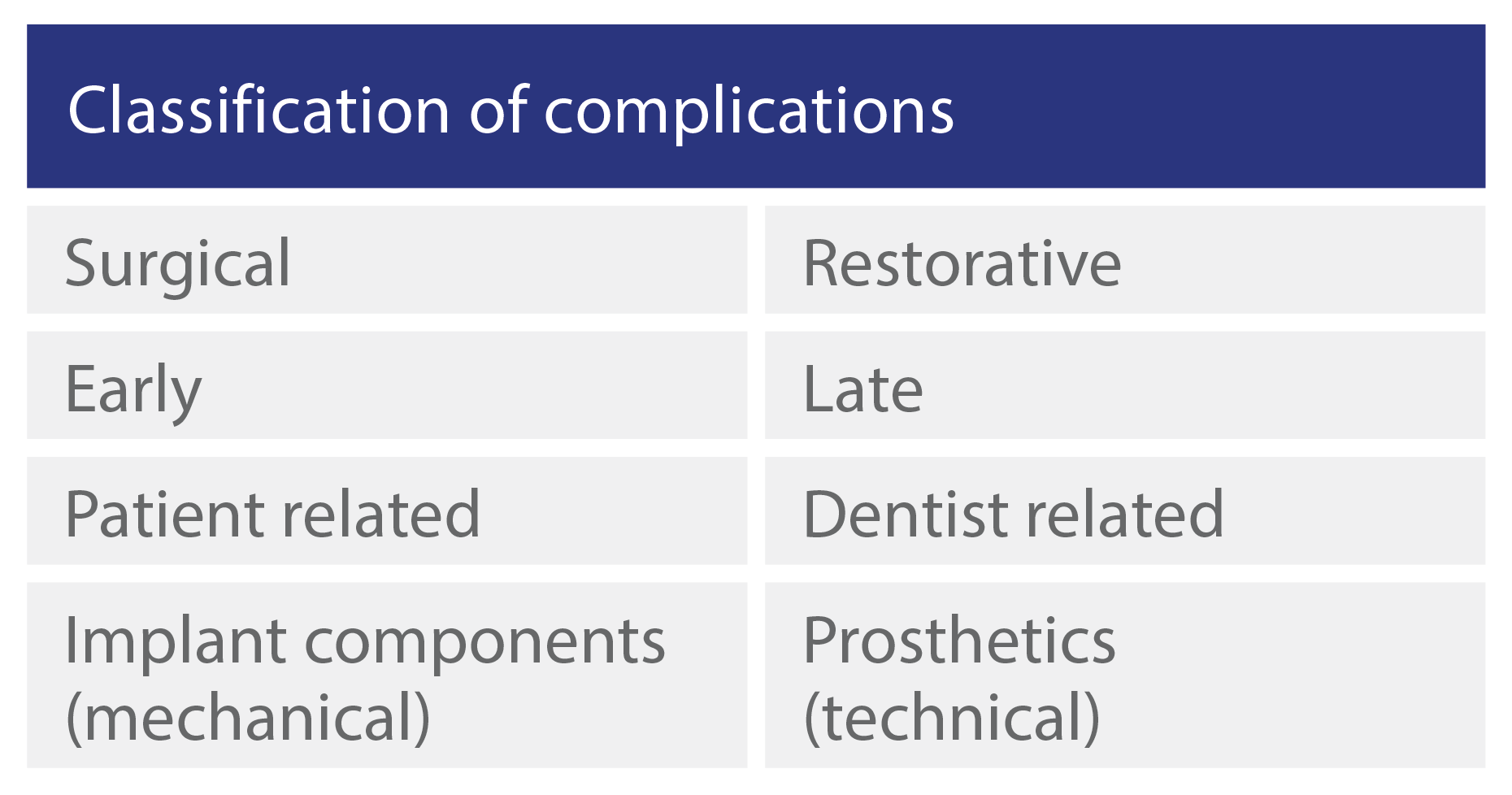 Angela Cowell and Beatriz Sanchez-Inigo highlight the most common complications in implant dentistry and how to prevent them where possible.
Angela Cowell and Beatriz Sanchez-Inigo highlight the most common complications in implant dentistry and how to prevent them where possible.
Dental implant treatment can significantly improve a patient’s function, aesthetics and quality of life. However, this treatment is not without complications. This article aims to highlight the most common complications so they can be recognised by all practitioners.
Being aware of complications at an early stage means they can be intercepted and managed as soon as possible – before implant failure. In addition, this article discusses how to prevent complications where possible. As Eleanor Roosevelt said: ‘Learn from mistakes of others, you can’t live long enough to make them all yourself.’
Even before treatment starts, a patient must understand that complications can occur, despite clinical skills, experience and irrespective of the apparent cost of treatment. Where different clinicians place and restore implants, a clear handover between the implant surgeon and restorative dentist is needed, as well as excellent relationships between clinicians and laboratories.
When complications occur, good patient communication is essential. Explaining the problem and its ramifications clearly and what resolutions may occur is an important responsibility for those undertaking implant dentistry. Asking colleagues and discussing cases are learning opportunities.
Campbell and Hare (2022) explained the importance of audit in the January issue of Clinical Dentistry. It is extremely valuable to log your complications to enable reflection, and perhaps identify patterns that lead to a change in your practice. Having this dataset also helps you accurately explain your success rates to patients.
Classification of complications
Arguably, the most comprehensive classification of complications is by the International Team for Implantology (ITI) (Bragger and Heitz-Mayfield, 2015), which divides these into:
- Surgical
- Biological
- Aesthetic
- Hardware.
However, there are other ways of classifying these, as shown in Table 1.
For the purposes of this article, the common implant complications are divided into those occurring early and later in a patient’s treatment.

Early complications
Early complications can occur at the time of surgery or in the weeks after this, as well as during the restoration process.
Here, early complications are further divided into ‘surgical’ and ‘restorative’ subsets.
To read more of this article and gain access to hundreds of other CPD courses, visit Dentistry CPD.


